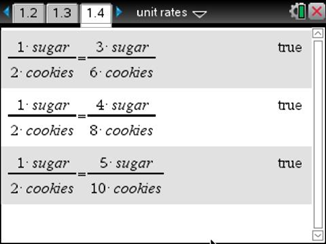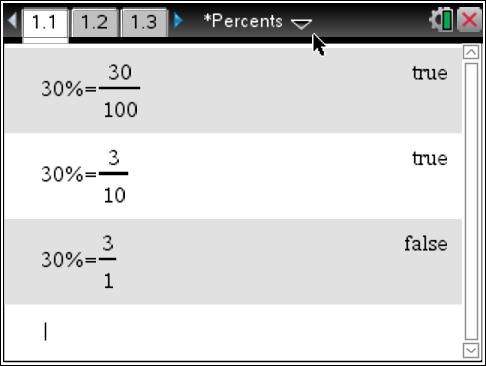
CAS with Unit Rates
The Computer Algebra System (CAS) enables students to investigate unit rates, opening up a world of options because the device recognizes words as variables. Teachers can actually enter "one cup of sugar makes two cookies" in fraction form on a TI-Nspire™ CX CAS and get the results shown here. To promote deep thinking about the topic and engage students in a discussion, ask questions like: Why are these equations true? What stays the same? What changes? What other ratios would work? What other ratios would not work? Asking the right questions is key to starting effective discussions, but what then? Multiple representations help students visually see what the math is doing, which in turn leads to better understanding and skill mastery. Look at the following situation: Joe can mow…
